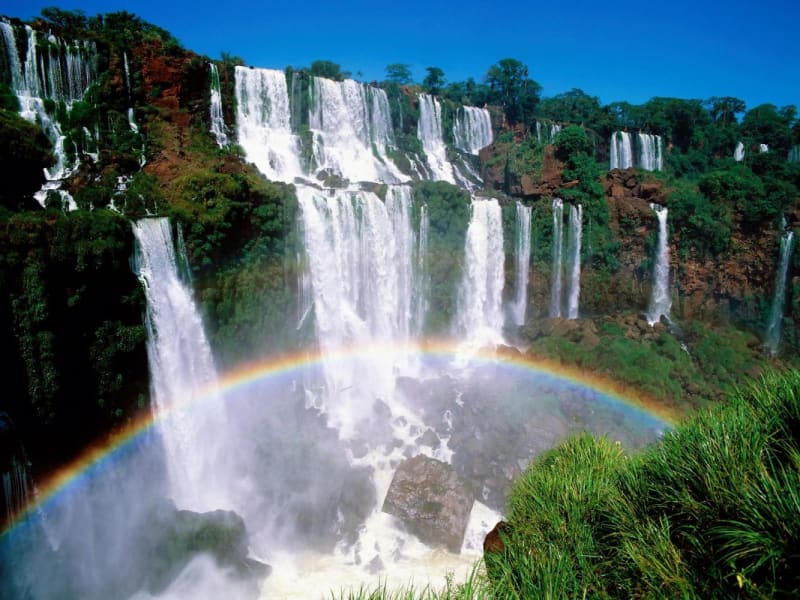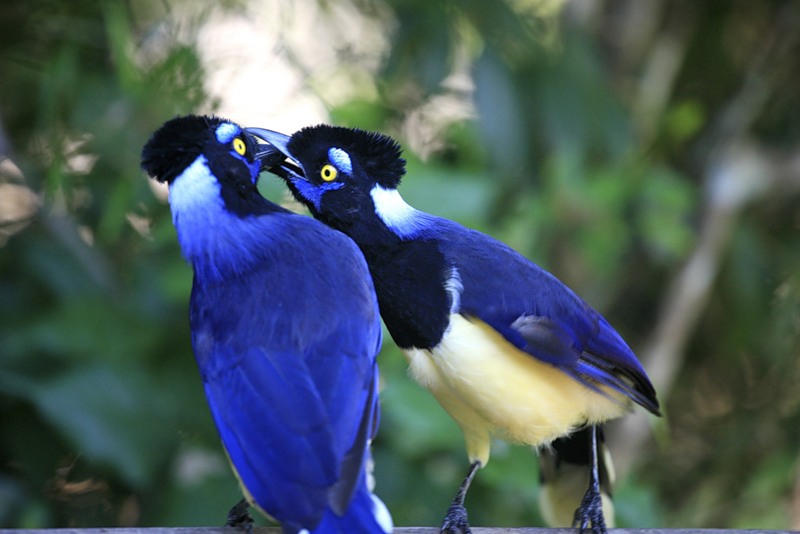Iguazu National Park
Iguazu is a national park of Argentina, located in the province of Misiones. The park was founded back in 1934 and its main part is the Iguazu Falls, stretching for one and a half kilometers, going beyond the border of Brazil, which also declared its part of the waterfall a national park. The parks are located in the Atlantic Forests of Parana ecoregion and are listed as a UNESCO World Heritage Site.

The first people inhabited these places 10,000 years ago, and prehistoric remains of jars were found here. The area near Iguazu was inhabited by Indians, whose main activities were hunting, fishing and gathering. Sometime in 1000 AD, Guarani Indians came from the northern lands, forcibly displacing other tribes. They also gave the name Iguazu Falls, which translates as "Big Water".
The river flows through solid layers of basalt left here after volcanic eruptions. The lava stopped at the place of the waterfall. The Iguazu River is one and a half kilometers wide and forms a horseshoe-shaped waterfall due to the characteristic bends of the riverbed. The main cascades of the waterfall have the same shape. Underwater boulders break the river into turbulent streams that fall from a great height, raising water spray under the waterfall.

The legend of Iguazu Falls
There is a legend in these places that God fell in love with a beautiful girl, but she refused him because she loved someone else. The girl decided to sail away with her lover along the river, but God found out about it and divided the river into two parts so that the lovers could no longer be together. This is how Iguazu Falls arose. It is worth noting that the lovers are now separated by the border of Argentina and Brazil, which for many years have been arguing about which side of the waterfall is more picturesque. Nevertheless, Brazil offers only a beautiful panoramic view, while Argentina has more cascades of waterfalls, so you can get close to them.
Flora and fauna of Iguazu Park
Iguazu National Park has a very rich flora and fauna. There are ferns, orchids, palm trees, and various fruit trees that attract a large number of birds. And there are many varieties of birds here - over 450 birds, which are best observed in the morning or evening. Walking near the waterfall, you can meet various parrots, lizards, various insects and butterflies, as well as the smallest bird - a hummingbird. There are 80 representatives of mammals walking around the national park, of which cougars and jaguars are the most striking. Many endangered species have been sheltered in the park, keep an eye on them: ocelot. anteater, an American tapir. Iguazu Park has a warm climate with an average January temperature of +32, which is reminiscent of the Amazon tropics.
There is an information center at the entrance to the national park, which offers a beautiful panoramic view of the waterfall. From here, there are 2 routes to the waterfall: the upper one, passing over the waterfall, and the lower one, which allows you to walk along multi-level bridges, look at the waterfall from the side, and also approach one of the cascades. From a special platform, visitors can feel the full force of the water pressure. Fans of extreme sports can take an inflatable boat to the island of San Martin, located opposite the raging waterfall.






